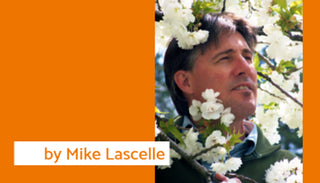Summer flowers play an important role in our gardens by providing that splash of colour we all crave from spring through summer. But as the forget-me-nots fade and the pansies begin to stretch in the heat, we need to pivot towards those annuals that will thrive in those torrid days of June to August. Here are a few ‘bulletproof’ choices to get you growing in the right direction.
Lantana
This is a rather large plant family (150 species) resembling Verbena (to which it is closely related), which originally hails from the tropical Americas and Africa, so you know it can take the heat. Lantana camara and montevidensis (Trailing Lantana) are the most common species used for breeding, and the colour range is incredibly diverse, with bicolour blooms being the most popular. Lantana prefers a part- to full-sun exposure and works well in containers, provided the growing media is well-drained. They are absolute magnets for both hummingbirds and butterflies given their nectar production and they bloom all summer long with minimal deadheading. Do not overfertilize as high nitrogen will only produce lush foliage but few flowers.
Cleome
This large summer flower works well in the background of annual displays or as filler in mixed borders. Cleome (C. hassleriana or spinosa) hails from South America so it is born to beat the heat. For those of you living near forests, it is also deer resistant. The common name, Spider Flower, is a reference to the fine spidery threads found on the flower heads — ironically, this annual is generally pest-free. The Proven Winner hybrids, ‘Senorita Blanca’ and ‘Rosalita’ (2-4’ tall) are good choices as these are sterile, have non-sticky foliage, and do not require deadheading. Cleome prefers full sun exposure and requires little to no fertilizer.
Gazania
Also known as African Daisy or Treasure Flower, Gazania rigens (or splendens) and its many hybrids are tropical members of the Aster Family from South Africa. The large daisies lend themselves to the warm colour range (orange, red, yellow, hot pink), with the exception of the whites, and are borne from early summer into autumn. Deadheading the spent blooms will improve the display and the look of the individual flowers close up at night or on overcast days. At only 6-10” tall, Gazanias are ideal for massing in foreground areas and also tolerate coastal salt spray and dry, sandy soils (once established). They come in both green and silvery-grey-leaved forms and require full sun exposure, as partial shade will only result in powdery mildew problems.
Portulaca

This close relative of the Purslane weed (P. oleracea) features drought-resistant succulent-like foliage with single to double flowers in shades of red, orange, pink, white, and yellow. Also known as Moss Rose (Portulaca grandiflora) due to blooms resembling those of miniature roses, it flowers from early summer to frost and requires no deadheading. This native of Brazil, Uruguay, and Argentina thrives on the heat and can be grown in shallow containers if you have heavy, clay soil.
Kalanchoe
Here in coastal B.C., most of us consider Kalanchoes (K. blossfeldiana) as houseplants but they are increasingly being used to brighten outdoor mixed planters and bedding schemes. Keep in mind that greenhouse-grown plants may need to be adjusted to full sun exposure gradually or foliar scorch may occur. This native of Madagascar likes the soil to dry out between waterings and comes in a myriad of bright colours and double-flowered forms known as Calandivas.
Coleus
Most of us don’t consider Coleus as heat-lovers, which they are, but unlike most of the other plants featured in this article, they require even moisture and fertile soil. Given those two needs, you will be rewarded with a tapestry of dazzling foliage that will last until the first frosts. Another misconception about Coleus (C. blumei or Solenostemon scutellarioides) is that they can only be planted in the shade, when in fact many newer varieties are sun-tolerant with the exception of the large-leaved Kong Series. These are primarily foliage plants, as the white to pale blue flowers (which appear in summer) rarely complement the foliage and should be removed. The other benefit of deadheading the blooms is that your plants will retain their vigour, as no energy is lost on seed production.
Well, that ends our tour of beat-the-heat annuals, but at least you know that even during the upcoming ‘dog days’ of summer, there are still some good choices for planting durable seasonal colour.


